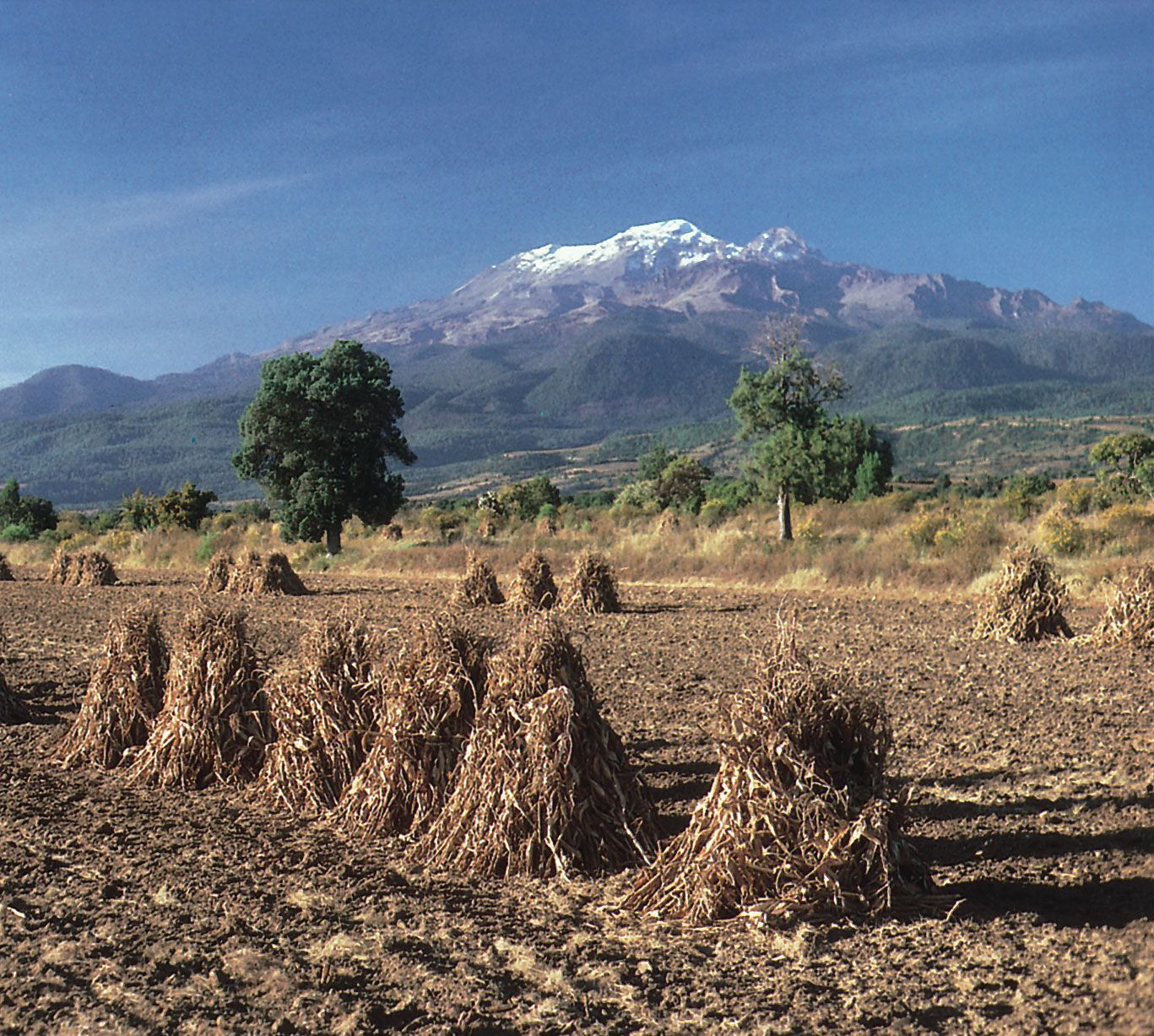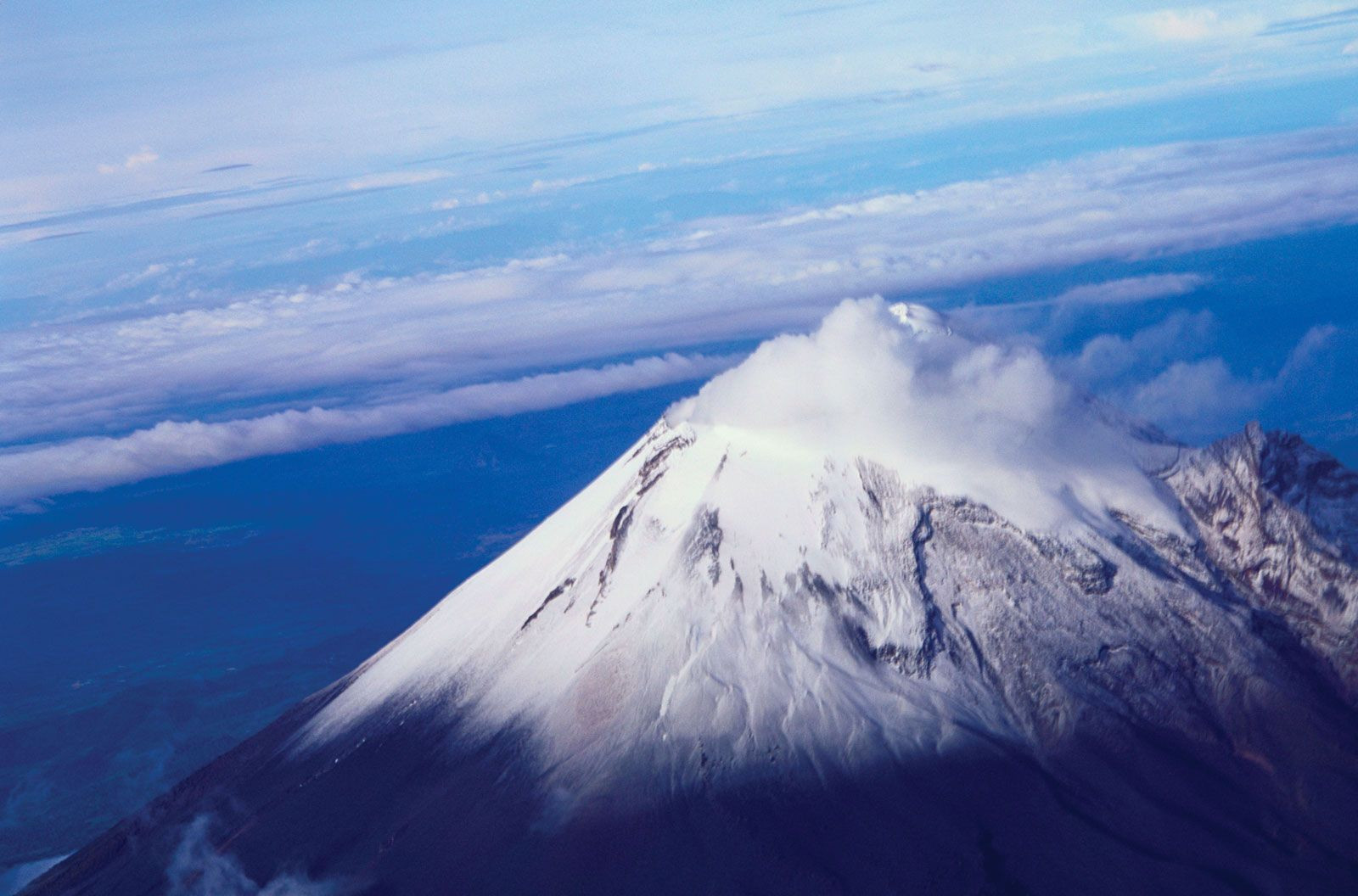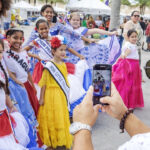Where is Mexico located? Mexico, a vibrant country south of the United States, offers a rich tapestry of culture, history, and stunning landscapes, making it a popular destination for LGBTQ+ travelers. At gaymexico.net, we’re dedicated to providing you with the most up-to-date information on LGBTQ+-friendly destinations, events, and resources in Mexico. This article explores Mexico’s diverse geography and highlights some of its most welcoming spots for the queer community, ensuring your Mexican adventure is both unforgettable and safe. Dive in to learn about gay travel, LGBTQ+ culture, and inclusive tourism.
1. Understanding Mexico’s Location and Geography
Where is Mexico located geographically? Mexico is situated in the southern portion of North America, bordered by the United States to the north, the Pacific Ocean to the west and south, Guatemala and Belize to the southeast, and the Gulf of Mexico and Caribbean Sea to the east. Its location gives it a diverse climate and geography, ranging from deserts and mountains to tropical rainforests and coastlines.
1.1. Key Geographical Regions of Mexico
Mexico’s diverse geography is divided into nine major physiographic regions:
- Baja California
- Pacific Coastal Lowlands
- Mexican Plateau
- Sierra Madre Oriental
- Sierra Madre Occidental
- Cordillera Neo-Volcánica
- Gulf Coastal Plain
- Southern Highlands
- Yucatán Peninsula
1.2. Baja California: A Desert Paradise
The Baja California Peninsula, an isolated strip of arid land in northwestern Mexico, stretches between the Pacific Ocean and the Gulf of California. This peninsula, divided between Baja California and Baja California Sur, is approximately 800 miles long but rarely exceeds 100 miles in width.
Baja California peninsula in Mexico, showcasing its unique desert landscape and coastal beauty.
1.3. Pacific Coastal Lowlands: Fertile Farmlands
The Pacific Coastal Lowlands extend nearly 900 miles south from Mexicali and the Colorado River delta to Tepic. These lowlands, bounded by the Sierra Madre Occidental, feature coastal terraces, mesas, and riverine deltas.
1.4. Mexican Plateau: The Heart of Mexico
The Mexican Plateau, the largest and most densely populated region, is flanked by the Sierra Madre Occidental and Sierra Madre Oriental. It includes the Mesa del Norte (Northern Plateau) and the Mesa Central. The plateau rises from 4,000 feet above sea level in the north to 7,000–9,000 feet near Mexico City.
 Iztaccíhuatl volcano, Puebla state, Mexico
Iztaccíhuatl volcano, Puebla state, Mexico
Iztaccíhuatl volcano overlooking harvested corn in Puebla state, illustrating the diverse landscapes of the Mesa Central.
1.5. Sierra Madre Occidental: A Volcanic Border
The Sierra Madre Occidental forms the western border of the Mexican Plateau, with an average elevation of 8,000–9,000 feet. This volcanic region is incised by westward-flowing streams, creating spectacular gorges like the Copper Canyon.
1.6. Sierra Madre Oriental: Folded Mountains
The Sierra Madre Oriental, composed of folded mountains of shales and limestones, lies on the eastern side of the Mexican Plateau. It extends approximately 700 miles from north to south, with peaks rising above 12,000 feet.
1.7. Cordillera Neo-Volcánica: Volcanic Axis
The Cordillera Neo-Volcánica, also known as the Neo-Volcanic Axis, is a geologically active mountain range that links the Sierra Madre Occidental and Sierra Madre Oriental. It includes famous peaks like Citlaltépetl, Popocatépetl, and Iztaccíhuatl.
 Citlaltépetl, Veracruz state, Mexico
Citlaltépetl, Veracruz state, Mexico
Citlaltépetl, the highest point in Mexico, located in Veracruz state, showcasing the volcanic landscape of the Cordillera Neo-Volcánica.
1.8. Gulf Coastal Plain: Lagoons and Swamps
The Gulf Coastal Plain extends approximately 900 miles along the Gulf of Mexico, from Tamaulipas to the Yucatán Peninsula. This plain features lagoons and low-lying swampy areas, particularly in its northern portion.
1.9. Southern Highlands: Mountain Ranges and Plateaus
The Southern Highlands consist of dissected mountain ranges and plateaus, including the Sierra Madre del Sur, Mesa del Sur, and the Chiapas Highlands. The Sierra Madre del Sur features crystalline mountains and tourist destinations like Acapulco.
 Acapulco, Mexico
Acapulco, Mexico
Panoramic view of Acapulco, Mexico, highlighting the allure of the coastal resorts in the Southern Highlands.
1.10. Yucatán Peninsula: Limestone Terrain
The Yucatán Peninsula, northeast of the Tabasco Plain, separates the Gulf of Mexico and the Caribbean Sea. Its limestone terrain is characterized by caverns and sinkholes (cenotes).
2. Why Mexico is a Great Destination for LGBTQ+ Travelers
What makes Mexico a good option for LGBTQ+ travel? Mexico is increasingly recognized as an LGBTQ+-friendly destination, offering a variety of welcoming cities, resorts, and cultural experiences. The country’s vibrant culture, stunning landscapes, and warm hospitality make it an attractive choice for queer travelers.
2.1. LGBTQ+ Rights and Legal Protections in Mexico
Mexico has made significant strides in LGBTQ+ rights, including legalizing same-sex marriage nationwide and enacting anti-discrimination laws. According to Human Rights Watch, Mexico has been progressive in LGBTQ+ rights compared to other Latin American countries.
2.2. Societal Attitudes Towards LGBTQ+ Individuals in Mexico
While legal protections are in place, societal attitudes can vary. Major cities and tourist destinations are generally more accepting, but it’s essential to be aware of local customs and attitudes, particularly in more rural areas.
2.3. Popular LGBTQ+ Destinations in Mexico
Several Mexican cities and regions are particularly popular among LGBTQ+ travelers:
- Puerto Vallarta: Known as the “San Francisco of Mexico,” Puerto Vallarta boasts a thriving LGBTQ+ scene.
- Mexico City: The capital offers a vibrant gay nightlife, cultural attractions, and a welcoming atmosphere.
- Cancún: While known for its resorts, Cancún also has LGBTQ+-friendly venues and accommodations.
- Guadalajara: This city combines traditional Mexican culture with a growing LGBTQ+ presence.
3. LGBTQ+ Hotspots: Where to Go in Mexico
What are the top LGBTQ+ destinations in Mexico? Mexico offers a variety of LGBTQ+-friendly destinations, each with its unique charm and attractions. From bustling city centers to serene beach towns, there’s something for every queer traveler.
3.1. Puerto Vallarta: The Gay Beach Paradise
Puerto Vallarta is widely regarded as Mexico’s gay capital. Its Zona Romántica is packed with gay bars, clubs, restaurants, and hotels.
3.1.1. Top Gay Bars and Clubs in Puerto Vallarta
- Paco’s Ranch: A popular nightclub with drag shows and lively music.
- The Top Sky Bar: Offers stunning views and a relaxed atmosphere.
- Mr. Flamingo: Known for its themed parties and friendly vibe.
3.1.2. LGBTQ+ Friendly Hotels in Puerto Vallarta
- Almar Resort Luxury All Suites & Spa: A luxury gay resort with oceanfront suites.
- Casa Cupula: A boutique hotel with a relaxed and welcoming atmosphere.
- Garlands del Rio: Offers a unique and intimate experience.
3.1.3. Annual LGBTQ+ Events in Puerto Vallarta
- Vallarta Pride: A week-long celebration with parades, parties, and cultural events.
- Arena Festival: A popular electronic music festival attracting LGBTQ+ crowds.
3.2. Mexico City: A Cultural Hub
Mexico City is a cosmopolitan metropolis with a thriving LGBTQ+ scene. The Zona Rosa neighborhood is the heart of gay life in the city.
3.2.1. Best Gay Bars and Clubs in Mexico City
- Kinky Bar: A popular dance club with themed nights.
- Baby: A trendy bar with a mixed crowd.
- El Closet: A long-standing gay bar known for its friendly atmosphere.
3.2.2. LGBTQ+ Friendly Accommodations in Mexico City
- The Alest Hotel: A stylish hotel in the heart of Zona Rosa.
- Hotel Geneve Mexico City: A historic hotel with a welcoming attitude.
- Condesa DF: A trendy boutique hotel in the Condesa neighborhood.
3.2.3. Cultural and Historical Attractions in Mexico City
- Museo Frida Kahlo: Explore the life and art of the iconic Mexican artist.
- Xochimilco: Take a boat ride through the canals and experience traditional Mexican culture.
- Palacio de Bellas Artes: Admire the stunning architecture and art exhibitions.
3.3. Cancún: Beaches and Nightlife
Cancún, known for its beautiful beaches and vibrant nightlife, also offers LGBTQ+-friendly options.
3.3.1. Gay-Friendly Venues in Cancún
- 11:11 Club: A popular gay club with energetic music and dance floor.
- Laser Hot Bar: Known for its lively atmosphere and friendly staff.
3.3.2. LGBTQ+ Inclusive Resorts in Cancún
- Hard Rock Hotel Cancún: Offers a welcoming environment for all guests.
- Hyatt Ziva Cancún: Known for its excellent service and inclusive atmosphere.
3.3.3. Water Activities and Attractions in Cancún
- Isla Mujeres: Take a day trip to this beautiful island and enjoy snorkeling and swimming.
- Cenotes: Explore the natural sinkholes and underground rivers.
3.4. Guadalajara: Tradition Meets Modernity
Guadalajara offers a blend of traditional Mexican culture and a growing LGBTQ+ scene.
3.4.1. LGBTQ+ Scene in Guadalajara
- Envy Club: A popular gay club with themed nights and drag shows.
- California’s Bar: Known for its friendly atmosphere and strong drinks.
3.4.2. Cultural and Historical Sites in Guadalajara
- Guadalajara Cathedral: Admire the stunning architecture of this historic cathedral.
- Instituto Cultural Cabañas: Explore the art exhibitions and historical significance of this cultural center.
- Tlaquepaque: Visit this charming town known for its art galleries and craft shops.
4. Planning Your LGBTQ+ Friendly Trip to Mexico
How can I plan an LGBTQ+-friendly trip to Mexico? Planning an LGBTQ+-friendly trip to Mexico involves researching destinations, accommodations, and activities that cater to the queer community. It also means understanding local laws and customs to ensure a safe and enjoyable experience.
4.1. Researching LGBTQ+ Friendly Destinations and Accommodations
Use resources like gaymexico.net to find up-to-date information on LGBTQ+-friendly destinations, hotels, and venues. Look for accommodations that specifically cater to the LGBTQ+ community or have a reputation for being inclusive.
4.2. Understanding Local Laws and Customs
Familiarize yourself with Mexico’s laws regarding LGBTQ+ rights. While same-sex marriage is legal nationwide, attitudes can vary by region. Be aware of local customs and traditions, especially in more rural areas.
4.3. Safety Tips for LGBTQ+ Travelers in Mexico
- Stay Informed: Keep up-to-date on any travel advisories or safety concerns.
- Be Aware of Your Surroundings: Exercise caution, particularly in less touristy areas.
- Trust Your Instincts: If a situation feels unsafe, remove yourself from it.
- Connect with Local LGBTQ+ Groups: They can provide valuable insights and support.
4.4. Resources for LGBTQ+ Travelers
- gaymexico.net: Your go-to source for LGBTQ+ travel information in Mexico.
- Human Rights Watch: Provides reports on LGBTQ+ rights around the world.
- ILGA World: Offers information on LGBTQ+ laws and policies worldwide.
5. Connecting with the LGBTQ+ Community in Mexico
Where can I connect with the LGBTQ+ community in Mexico? Connecting with the local LGBTQ+ community can enhance your travel experience, providing insights, support, and opportunities for meaningful interactions.
5.1. Online Forums and Social Media Groups
Join online forums and social media groups dedicated to LGBTQ+ travel in Mexico. These platforms can connect you with locals and other travelers, offering tips, advice, and recommendations.
5.2. Local LGBTQ+ Organizations and Community Centers
Research local LGBTQ+ organizations and community centers in the cities you plan to visit. These organizations often host events and provide resources for queer individuals and allies.
5.3. Attending LGBTQ+ Events and Festivals
Attending LGBTQ+ events and festivals is a great way to meet locals and immerse yourself in the community. Events like Vallarta Pride and Arena Festival offer opportunities to celebrate diversity and connect with like-minded individuals.
6. Exploring Mexican Culture as an LGBTQ+ Traveler
How can I explore Mexican culture as an LGBTQ+ traveler? Exploring Mexican culture as an LGBTQ+ traveler involves embracing the country’s rich history, traditions, and cuisine while being mindful of local customs and attitudes.
6.1. Visiting Historical Sites and Museums
Mexico is home to numerous historical sites and museums that offer insights into its rich cultural heritage. From ancient ruins to colonial architecture, there’s much to discover.
6.2. Trying Local Cuisine
Mexican cuisine is renowned for its diverse flavors and regional specialties. Be sure to try local dishes and explore the culinary scene in the cities you visit.
6.3. Participating in Cultural Celebrations
Participating in cultural celebrations is a great way to experience Mexican traditions firsthand. From Día de Muertos to Cinco de Mayo, these events offer colorful displays and unique cultural experiences.
7. Addressing Challenges and Concerns
What are some challenges LGBTQ+ travelers might face in Mexico? While Mexico is generally welcoming to LGBTQ+ travelers, there can be challenges and concerns to be aware of, particularly in more conservative areas.
7.1. Potential Discrimination and Safety Issues
While major cities are generally safe, discrimination can occur in smaller towns or rural areas. Be aware of your surroundings and exercise caution, particularly when displaying public displays of affection.
7.2. Navigating Cultural Differences
Cultural attitudes toward LGBTQ+ individuals can vary across Mexico. Be respectful of local customs and traditions, even if they differ from your own.
7.3. Resources for Reporting Incidents
If you experience discrimination or harassment, know your rights and resources for reporting incidents. Local LGBTQ+ organizations and community centers can provide assistance and support.
8. Gaymexico.net: Your Ultimate Guide to LGBTQ+ Travel in Mexico
Why should I use gaymexico.net for planning my trip? Gaymexico.net is your ultimate guide to LGBTQ+ travel in Mexico, offering comprehensive and up-to-date information on destinations, events, resources, and more.
8.1. Comprehensive Information on LGBTQ+ Destinations
Our website provides detailed information on LGBTQ+-friendly cities, resorts, and venues, helping you plan your trip with confidence.
8.2. Up-to-Date Event Listings
Stay informed about the latest LGBTQ+ events and festivals in Mexico, from Vallarta Pride to local community gatherings.
8.3. Community Resources and Support
Connect with local LGBTQ+ organizations and access resources for support and assistance during your travels.
8.4. Travel Tips and Advice
Get valuable travel tips and advice from experienced LGBTQ+ travelers, ensuring a safe and enjoyable experience in Mexico.
9. Real Stories and Testimonials
What are other LGBTQ+ travelers saying about Mexico? Hearing from other LGBTQ+ travelers can provide valuable insights and inspiration for your trip.
9.1. Positive Experiences and Recommendations
Many LGBTQ+ travelers have shared positive experiences in Mexico, praising the welcoming atmosphere, vibrant culture, and stunning landscapes.
9.2. Lessons Learned and Tips for Future Travelers
Some travelers have also shared lessons learned and tips for future visitors, helping others navigate potential challenges and make the most of their trip.
10. Future of LGBTQ+ Travel in Mexico
What does the future hold for LGBTQ+ travel in Mexico? The future of LGBTQ+ travel in Mexico looks promising, with increasing recognition and acceptance of the queer community.
10.1. Growing Acceptance and Inclusivity
As societal attitudes continue to evolve, Mexico is becoming an increasingly inclusive destination for LGBTQ+ travelers.
10.2. Expanding LGBTQ+ Tourism Opportunities
With the growth of LGBTQ+ tourism, new opportunities are emerging for businesses and destinations to cater to the queer community.
10.3. Impact of Legal and Social Changes
Legal and social changes, such as the legalization of same-sex marriage, are having a positive impact on LGBTQ+ travel in Mexico, creating a more welcoming and inclusive environment.
FAQ: Your Questions About Mexico Answered
1. Is Mexico safe for LGBTQ+ travelers?
While major cities and tourist destinations are generally safe, it’s essential to be aware of your surroundings and exercise caution, particularly in more rural areas.
2. What are the best LGBTQ+ friendly cities in Mexico?
Puerto Vallarta, Mexico City, Cancún, and Guadalajara are among the most popular LGBTQ+ friendly cities in Mexico.
3. What legal protections exist for LGBTQ+ individuals in Mexico?
Same-sex marriage is legal nationwide, and anti-discrimination laws are in place, but enforcement can vary.
4. Where can I find LGBTQ+ friendly accommodations in Mexico?
Websites like gaymexico.net offer listings of LGBTQ+ friendly hotels, resorts, and guesthouses.
5. What are some popular LGBTQ+ events in Mexico?
Vallarta Pride, Arena Festival, and various local community events are popular among LGBTQ+ travelers.
6. How can I connect with the local LGBTQ+ community in Mexico?
Join online forums, attend local events, and connect with LGBTQ+ organizations and community centers.
7. What should I do if I experience discrimination in Mexico?
Report incidents to local authorities and LGBTQ+ organizations, and seek support from community resources.
8. What resources are available for LGBTQ+ travelers in Mexico?
Gaymexico.net, Human Rights Watch, and ILGA World are valuable resources for LGBTQ+ travel information and support.
9. Are there any cultural considerations for LGBTQ+ travelers in Mexico?
Be respectful of local customs and traditions, and be aware that attitudes toward LGBTQ+ individuals can vary by region.
10. How is Mexico working to become more inclusive for LGBTQ+ travelers?
Through legal reforms, social initiatives, and increased awareness, Mexico is striving to create a more welcoming and inclusive environment for LGBTQ+ travelers.
Ready to explore the beauty and diversity of Mexico? Visit gaymexico.net for comprehensive travel guides, event listings, and community resources. Connect with us today and start planning your unforgettable LGBTQ+ adventure in Mexico!
Address: 3255 Wilshire Blvd, Los Angeles, CA 90010, United States
Phone: +1 (213) 380-2177
Website: gaymexico.net
